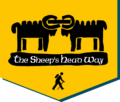Kilcrohane Stories
The Milk Untouched, The Family Had Died
In 1938 the Folklore Commission asked all the country’s national school children to collect stories from their parents. This is one such story collected by Maurice Sheehan of Kilcrohane:
“On the northern site of Killen there is place called “the cabhlacs” (ruined houses). In the time of the Famine there were three or four houses there. There is nothing there now but heaps of stones. The families died out. One of the families lingered a long time. Further up west near the hill there was a well to do family. Every morning and evening some one of them brought a jug of milk to the family in “the cabhlacs”. They used to leave the milk outside of the door because the people of the house had the fever. When the milk bearer had gone home some one of the fever stricken people carried in the jug of milk. They put the jug out again for the next evening. One morning however, when the milk bearer came he found that the milk of the evening before had not been touched. He went into the house only to find that all the family had died.”
Kilcrohane Curch – Buried Faced West
By James O’Mahony, Farmer, whose hard work made the Sheep’s Head Way possible.
“I dug the grave for Jackie Tobin. And on the western side of the church, the south-western corner, we had gone down to the bottom of a grave that had been there before. I said Jackie would like to do the job right and make it deep, and we said we’d sink it more, and the earth was a bit soft underneath, and we sunk it, and we got into another burial deeper than that. We found a skull that was in under the wall about two feet, and strange enough, I thought that he was buried faced west. That would be wrong unless he was a priest.”
The Church In Ruins
By Jack Sheehan, Farmer and Local Historian, Ardahill, Kilcrohane.
“Carew’s soldiers knocked the church, anyway, the locals built it up again (early 17th century). You can see that still; there are different stones on the western side. And it was handed over to the Protestants, and the Protestant religion became the Established religion of the country. And the story I heard was that the minister came here on three different occasions for service and nobody turned up. So he packed up and it went back again to the Catholics.
Smith said the church was in ruins in 1639; Smith wrote the “History of Cork” for the Queen. He made sure he didn’t insult the Queen, because he said the churches were in ruins, but he didn’t say why they were in ruins. Something made ruins of the churches, but he didn’t say what at all.”
